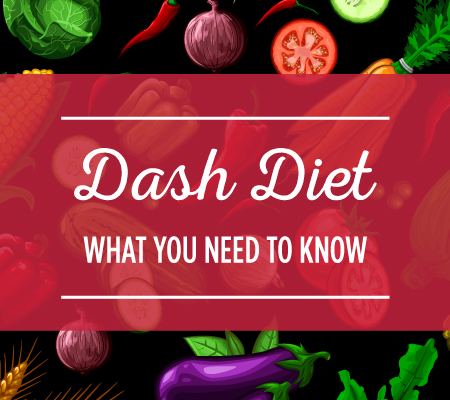Editor’s note: We’re inundated with promotions, ads and infomercials for weight loss. They tout the latest-greatest-fastest way to reach your goal but what’s right for you? In this occasional series for Shine365, Marshfield Clinic Health System Dietitian Chrisanne Urban takes a look at popular diets, weighs the pros and cons, and shares her thoughts.

The DASH eating plan
The Dietary Approaches to Stop Hypertension (DASH) eating plan was created about 20 years ago by the U.S. Government’s National Heart, Lung, and Blood Institute (NHLBI) to prevent and control hypertension.
Early DASH followers just happened to find that besides lowering high blood pressure a side benefit was weight loss.
Win-win!
The main thing about DASH is its benefits are far reaching. There is more than just lowering high blood pressure but following this diet can prevent it and help with other health issues,” said Urban. “It’s just a good overall diet. There’s no miracle here, folks. But does it work? Yes.”
Research has shown DASH reduces risk of many diseases including some cancers, stroke, heart disease, heart failure, kidney stones and diabetes. It also reduces cholesterol and improves insulin sensitivity. All these benefits have paid off for DASH, which has been ranked as the No. 1 diet by U.S. News & World Report from 2011-18.
This lifelong approach to food is high in fruits, vegetables, whole grains and low-fat dairy foods. It replaces snacks with nuts and seeds that should be measured because they’re high in calories. It calls for foods rich in nutrients, calcium, potassium, magnesium and fiber. Protein sources are fish, poultry and beans but no red meat. It also limits sugar-sweetened foods and beverages as well as added fats.
Urban said this well-balanced approach to eating is based also on cooking from scratch and limiting dining in restaurants, where sodium could lurk.
The average American consumes about 3,400 milligrams of sodium a day and the standard DASH diet calls for a decrease to 2,300 milligrams, Urban said. You may be eating foods you might not know are high in sodium. For example:
- Sorry cheese lovers. Cheese has lots of sodium. Check your labels and choose Swiss or farmer’s cheese, both lower-sodium options.
- Salsa fans, a fact for you. Salsa may be the No. 1 condiment, beating out ketchup, but the sad news is a quarter cup of commercially-sold salsa has 400 milligrams of sodium. What to do? Make your own, Urban suggests.
Pros
This diet is about eating real foods that can be spiced up using herbs and spices rather than salt.
All kinds of low-sodium recipes are available on line and, for example, the government’s website does a good job of sharing nutrition information, not just telling you what to do but how to do it with its recipes.
Information is available through your local library, local University of Wisconsin-Extension office and local dietitians.
It’s been recommended by the U.S. Department of Agriculture as one of its ideal eating plans for everyone.
Cons
It may mean more work for you with shopping and cooking but the benefit is that you control what you eat and the amount of sodium you use.
Following DASH may have a higher cost, Urban said, “but we don’t think about cost when we buy chips. Just look for sales on good food.”






Leave a Reply